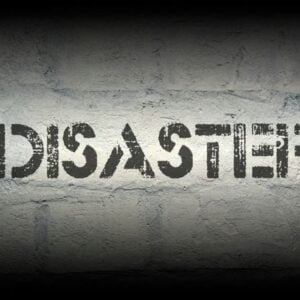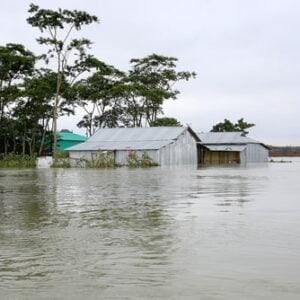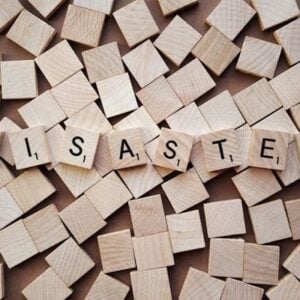On May 8, 1947, the World Bank approved its very first loan of $250 million—equivalent to about $3.5 billion in today’s terms—to the French government to help rebuild its economy after the devastation of the Second World War.
Seventy-eight years later, the World Bank is still helping countries recover from disasters, but its mission has expanded well beyond post-conflict reconstruction. What began as a focus on rebuilding economies has grown into an integrated approach that combines long-term development with disaster preparedness. Today, scaling up investments in disaster risk management has become a central part of advancing global development.
The World Bank is now the world’s largest source of financing, knowledge, and support for disaster risk management. Between 2010 and 2020, its investment in disaster risk reduction tripled, supported in part by the Global Facility for Disaster Reduction and Recovery (GFDRR). At present, the Bank channels around $7.5 billion each year into disaster risk management projects, which deliver a strong return on investment. In fact, every dollar invested in resilient infrastructure generates up to four dollars in benefits by reducing damages, ensuring continuity of services, and protecting lives and livelihoods.
This portfolio includes a wide range of projects. In Mali, for instance, an $8.2 million project is strengthening climate resilience by improving hydro-meteorological and early warning systems. In Türkiye, a $1 billion recovery project is advancing reconstruction following the 2023 earthquake. Such investments deliver tangible outcomes, from safer cities and stronger emergency systems to better access to jobs and markets, while flexible financing tools ensure that even the most vulnerable countries can act quickly when crises emerge.
The value of investing in resilience is often described as the triple dividend. The first dividend is protection. Preparedness saves lives and reduces losses, as shown in Poland, where flood defenses helped prevent widespread damage in 2024, and in Japan, where building codes and warning systems have long shielded millions of people. Strong infrastructure ensures that hospitals, schools, and transport systems continue to function even during disasters, limiting both human suffering and economic disruption.
The second dividend is confidence. Disasters undermine trust and discourage long-term investment, but when resilience is built into planning and governance, confidence grows. In Dar es Salaam, properties in flood-prone areas are valued 30 percent lower than those in safer zones, while in Buenos Aires, flood protection has boosted land values enough to offset the costs of building resilient infrastructure. Job creation is another outcome: in Tanzania, for example, a World Bank-financed transport project in Dodoma is expected to generate 10,000 jobs by 2030, with another 2,000 jobs projected through the Msimbazi Basin Development Project by 2027.
The third dividend is preparedness. Effective preparedness goes beyond having an emergency plan. It ensures that policies, systems, and financing are in place before a disaster occurs. Through its Crisis Preparedness and Response Toolkit, the World Bank helps countries access emergency financing, shift budgets quickly, and use insurance mechanisms or debt pause clauses that free up resources during crises. In Honduras, this toolkit enabled the government to access $50.8 million almost immediately in the aftermath of Tropical Storm Sara in 2024, supporting rapid response and reducing long-term damages.
Innovation is increasingly shaping disaster preparedness and response. Artificial intelligence, satellite technology, drones, and advanced risk modeling tools are helping governments anticipate disasters and respond more effectively. The World Bank’s Global Rapid Post-Disaster Damage Estimation (GRADE) approach provides fast and detailed assessments that inform recovery, as was the case after the Türkiye-Syria earthquake in 2023. Similarly, urban heat mapping projects in Asia, Africa, and Europe combine satellite data with community input to identify high-risk areas, guiding investments in urban greening and infrastructure improvements.
Nature-based solutions are also proving to be vital. Mangrove forests in Viet Nam, reforested embankments in Bangladesh, and restored wetlands in Mozambique not only mitigate flood risks but also strengthen biodiversity, improve public health, and create local jobs. These approaches combine environmental stewardship with disaster preparedness, delivering resilience and sustainability at the same time.
Examples from around the world show the impact of these efforts. In Romania, upgraded fire stations now provide safer and more efficient services to nearly a million people. In Honduras, disaster-resilient schools are giving vulnerable communities safe learning spaces. In Tonga, emergency financing helped the government respond rapidly after the 2022 volcanic eruption and tsunami. Each case demonstrates how timely investments in resilience protect people, preserve services, and speed recovery.
As climate change intensifies, the future of disaster risk management will increasingly rely on digital innovation, nature-based solutions, and forward-looking financing mechanisms. The World Bank, through partnerships with organizations such as the European Space Agency, is ensuring that countries have access to real-time data and modern tools for better risk management.
Investing in resilience is no longer optional. It is essential for safeguarding livelihoods, creating employment, and building stable, inclusive economies. By prioritizing disaster risk management, countries not only protect their people and economies but also lay the foundation for long-term development and shared prosperity.






